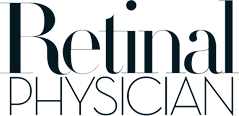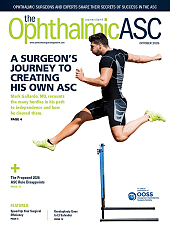In retina practices, coding issues are rarely just about the claim form. When documentation is incomplete, modifiers are misused, or medical necessity isn’t apparent, the result isn’t only a denial from the payer. These situations can lead to wasted staff time, delayed revenue, and frustration for everyone involved. Addressing these coding challenges from a practice management perspective ensures both compliance and efficiency.
Q: How does documentation impact coding and revenue?
A: The selection of CPT, HCPCS, and ICD-10 codes should be based on the documentation, meaning the documentation must support the codes. The issue is not always whether the payer will pay, but whether the documentation will withstand a pre- or post-pay audit. From a management perspective, it also wastes physician time when amendments and corrections to chart notes are necessary, such as when a mistake is made on a procedure note. Educating scribes and techs on accurate documentation during the visit helps prevent both compliance issues and workflow delays.
Q: How can modifier misuse lead to both compliance and operational issues?
A: Modifiers can lead to claims being paid, but they also can raise red flags. As with documentation, the use of modifiers must be appropriate. Some modifiers restart the global period, while others do not. Choosing the correct modifiers and providing proper documentation are essential. Beyond the compliance risk, there is inefficiency: managers spend hours re-educating staff, and coders must review flagged claims. The bigger issue is cultural—when physicians assume “the billers will fix it,” coding accuracy becomes a dangerous afterthought.
Q: Why is it just as important to document medical necessity as to document what was done?
A: Payers don’t reimburse based on what happened— they reimburse based on why it was necessary. A physician might switch from one drug to another appropriately, but if the documentation doesn’t explain the clinical reasoning, denials occur. And the denial is doubly costly because the invoice for the drug still must be paid. For practice managers, this again means extra staff time on appeals, slower reimbursement, and the potential loss of revenue altogether.
Q: What are the risks of pulling forward or copying/pasting notes?
A: Pulling forward or copying and pasting can save time, but the danger is that the chart note is not properly edited to reflect the current service date findings. This can put the practice at risk of claims denials and, potentially, accusations of fraud. Pulling forward only the past family and medical history might be a good option. The rest of the findings would need to be entered again each time. If you decide to pull the previous note forward, be sure to make the necessary edits; otherwise, you risk accusations of cloned documentation.
Q: Why is injection documentation a frequent source of compliance trouble?
A: Injections are routine in retina practices, and many of the drugs are high dollar, making them a top audit target. If details such as having consent, appropriate laterality, and outcomes aren’t recorded, both compliance and payment are jeopardized. Ensuring that the documentation includes all supporting information is critical. Beyond the audit risk, incomplete injection notes lead to workflow interruptions as staff must chase down missing details; if necessary, the physician will need to amend the chart note.
Team Effort Required
Coding accuracy isn’t a task just for the billing team—it is a responsibility shared across the entire practice. By aligning documentation, workflows, and staff training, retina practices can minimize denials, reduce audit risk, and maintain a smooth operation. RP









